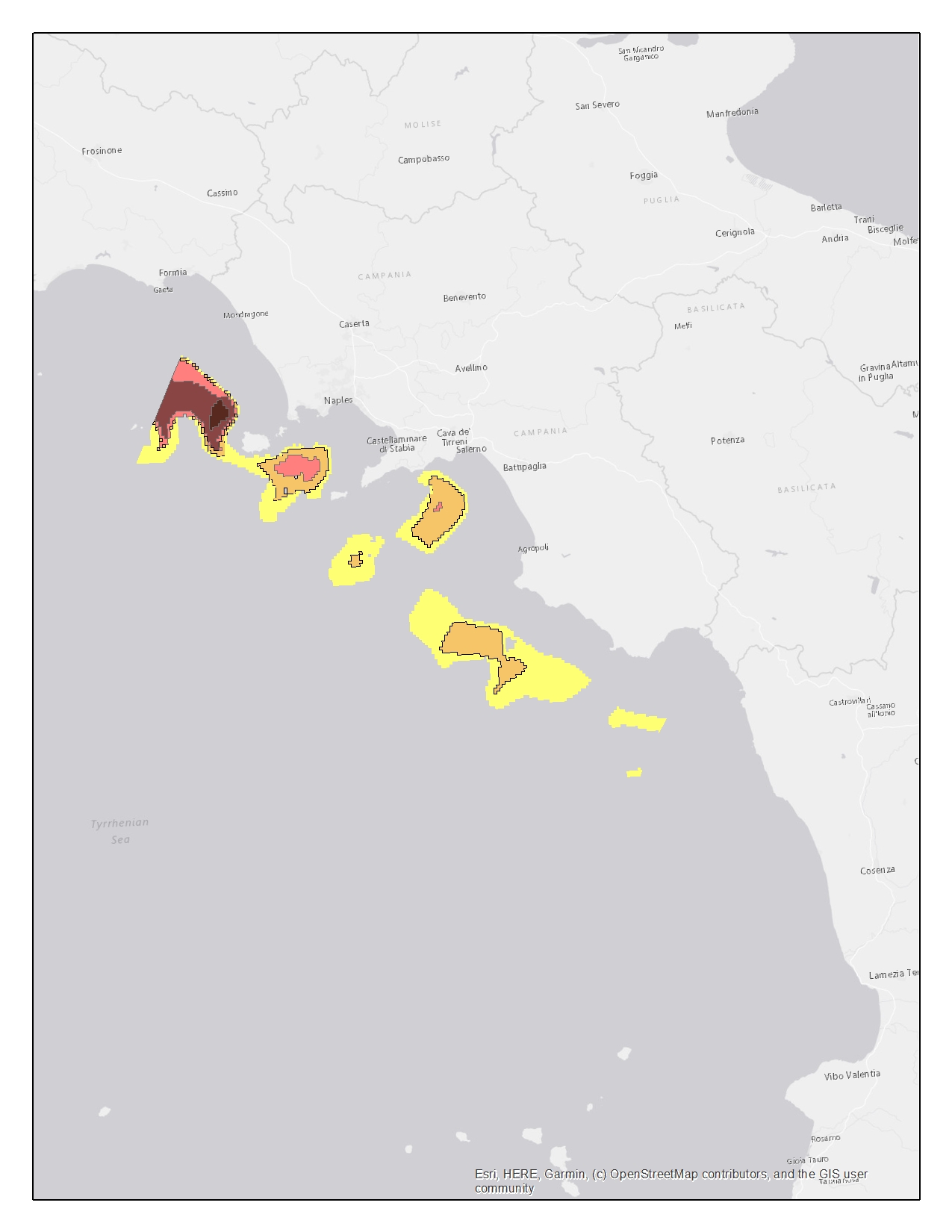University of Naples "Federico II"
Type of resources
Topics
INSPIRE themes
Keywords
Contact for the resource
Provided by
Years
Formats
Representation types
Update frequencies
status
-

The dataset contains the Essential Fish Habitat (EFH) of 10 marine species along the coast of the Campania region. The dataset is constituted by georeferenced data on the spawning areas and the recruitment areas (nurseries) of these species, in .shp format. The data have been collected in the context of the MEDISEH project (https://imbriw.hcmr.gr/mediseh/). The procedures behind the sampling campaign and other details on the way the whole dataset was built up, are discussed in the “MEDISEH final report” attached. The MEDISEH project was conducted at Mediterranean scale. The entire dataset was handled using ArcGis according to the FEAMP objective and hence restricted to the Campania region. The present dataset includes the EFH for the following demersal and small pelagic species: Eledone cirrosa, Galeus melastomus, Illex coindetii, Merluccius merluccius, Mullus barbatus, Nephrops Norvegicus, Pagellus erhytinus, Parapenaeus longirostris, Trachurus mediterraneous, Trachurus trachurus. For each species, spatial information on the spawning areas or the recruitment areas or both are provided. The files are organized in folders, called by the shortened name of the species and the letter “c” referred to “Campania”. Each of them contains then the folder holding the shapefile, called “Recruitment” or “Spawning” or both, according to the presence/absence of spawning and nursery areas in the Campania region for each species. The shapefiles are collocated and named following the scheme: “species_c_r” for recruitment areas and “species_c_s” for the spawning areas. Ex. the “eledcir_c_r.shp” file refers to the recruitment areas of Eledone cirrosa in Campania. Spatial analysis techniques allow to identify locations that are more likely to be density hot spot areas for fish nurseries and spawning grounds. All the shapefiles are characterized by areas with increasing probability to be an EFH. For the most of the considered species, the areas of interest are featured by 5 levels of probability (0.5-20%, 20-40%, 40-60%, 60-80%, 80-100%). In the cases of Trachurus mediterraneous and Trachurus trachurus the areas are instead featured by 3 levels of probability (25-50%, 50-75%, 75-100%) both for nurseries and spawning locations.
-

The dataset contains the Essential Fish Habitat (EFH) of 10 marine species along the coast of the Campania region. The dataset is constituted by georeferenced data on the spawning areas and the recruitment areas (nurseries) of these species, in .shp format. The data have been collected in the context of the MEDISEH project (https://imbriw.hcmr.gr/mediseh/). The procedures behind the sampling campaign and other details on the way the whole dataset was built up, are discussed in the “MEDISEH final report” attached. The MEDISEH project was conducted at Mediterranean scale. The entire dataset was handled using ArcGis according to the FEAMP objective and hence restricted to the Campania region. The present dataset includes the EFH for the following demersal and small pelagic species: Eledone cirrosa, Galeus melastomus, Illex coindetii, Merluccius merluccius, Mullus barbatus, Nephrops Norvegicus, Pagellus erhytinus, Parapenaeus longirostris, Trachurus mediterraneous, Trachurus trachurus. For each species, spatial information on the spawning areas or the recruitment areas or both are provided. The files are organized in folders, called by the shortened name of the species and the letter “c” referred to “Campania”. Each of them contains then the folder holding the shapefile, called “Recruitment” or “Spawning” or both, according to the presence/absence of spawning and nursery areas in the Campania region for each species. The shapefiles are collocated and named following the scheme: “species_c_r” for recruitment areas and “species_c_s” for the spawning areas. Ex. the “eledcir_c_r.shp” file refers to the recruitment areas of Eledone cirrosa in Campania. Spatial analysis techniques allow to identify locations that are more likely to be density hot spot areas for fish nurseries and spawning grounds. All the shapefiles are characterized by areas with increasing probability to be an EFH. For the most of the considered species, the areas of interest are featured by 5 levels of probability (0.5-20%, 20-40%, 40-60%, 60-80%, 80-100%). In the cases of Trachurus mediterraneous and Trachurus trachurus the areas are instead featured by 3 levels of probability (25-50%, 50-75%, 75-100%) both for nurseries and spawning locations.
-
Within the scope of FEAMP project, has been organized a monitoring campaign to evaluate the conservation status of biodiversity inside and outside the Marine Protected Areas (MPAs) of Campania region
 FEAMP GeoNetwork catalogue
FEAMP GeoNetwork catalogue